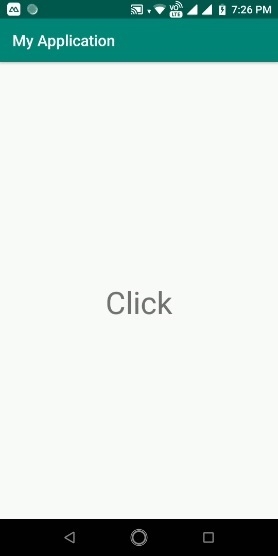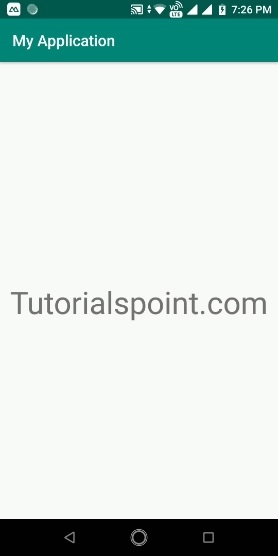
 Data Structure
Data Structure Networking
Networking RDBMS
RDBMS Operating System
Operating System Java
Java MS Excel
MS Excel iOS
iOS HTML
HTML CSS
CSS Android
Android Python
Python C Programming
C Programming C++
C++ C#
C# MongoDB
MongoDB MySQL
MySQL Javascript
Javascript PHP
PHP
- Selected Reading
- UPSC IAS Exams Notes
- Developer's Best Practices
- Questions and Answers
- Effective Resume Writing
- HR Interview Questions
- Computer Glossary
- Who is Who
Proper use cases for Android UserManager.isUserAGoat()?
This example demonstrate about Proper use cases for Android UserManager.isUserAGoat()
Step 1 − Create a new project in Android Studio, go to File ⇒ New Project and fill all required details to create a new project.
Step 2 − Add the following code to res/layout/activity_main.xml.
<?xml version = "1.0" encoding = "utf-8"?> <LinearLayout xmlns:android = "http://schemas.android.com/apk/res/android" xmlns:app = "http://schemas.android.com/apk/res-auto" xmlns:tools = "http://schemas.android.com/tools" android:layout_width = "match_parent" android:gravity = "center" android:layout_height = "match_parent" tools:context = ".MainActivity" android:orientation = "vertical"> <TextView android:id = "@+id/actionEvent" android:textSize = "40sp" android:layout_marginTop = "30dp" android:layout_width = "wrap_content" android:layout_height = "match_parent" /> </LinearLayout>
In the above code, we have taken text view to show global variable.
Step 3 − Add the following code to src/MainActivity.java
<?xml version = "1.0" encoding = "utf-8"?>
import android.content.pm.PackageManager;
import android.os.Build;
import android.os.Bundle;
import android.support.annotation.RequiresApi;
import android.support.v7.app.AppCompatActivity;
import android.view.View;
import android.widget.TextView;
public class MainActivity extends AppCompatActivity {
TextView actionEvent;
@RequiresApi(api = Build.VERSION_CODES.LOLLIPOP)
@Override
protected void onCreate(Bundle savedInstanceState) {
super.onCreate(savedInstanceState);
setContentView(R.layout.activity_main);
actionEvent = findViewById(R.id.actionEvent);
actionEvent.setText("Click");
actionEvent.setOnClickListener(new View.OnClickListener() {
@Override
public void onClick(View v) {
if(isUserAGoat()) {
singleToneClass singleToneClass = com.example.myapplication.singleToneClass.getInstance();
singleToneClass.setData("Tutorialspoint.com");
actionEvent.setText(singleToneClass.getData());
}
}
});
}
public boolean isUserAGoat() {
PackageManager pm = getPackageManager();
boolean app_installed;
try {
pm.getPackageInfo("com.example.myapplication",PackageManager.GET_ACTIVITIES);
app_installed = true;
}
catch (PackageManager.NameNotFoundException e) {
app_installed = false;
}
return app_installed;
}
}
Step 4 − Add the following code to src/singleToneClass.java
<?xml version = "1.0" encoding = "utf-8"?>
public class singleToneClass {
String s;
private static final singleToneClass ourInstance = new singleToneClass();
public static singleToneClass getInstance() {
return ourInstance;
}
private singleToneClass() {
}
public void setData(String s) {
this.s = s;
}
public String getData() {
return s;
}
}
Let's try to run your application. I assume you have connected your actual Android Mobile device with your computer. To run the app from android studio, open one of your project's activity files and click Run ![]() icon from the toolbar. Select your mobile device as an option and then check your mobile device which will display your default screen –
icon from the toolbar. Select your mobile device as an option and then check your mobile device which will display your default screen –

Now click on textview, it will show the result as shown below –

Click here to download the project code

